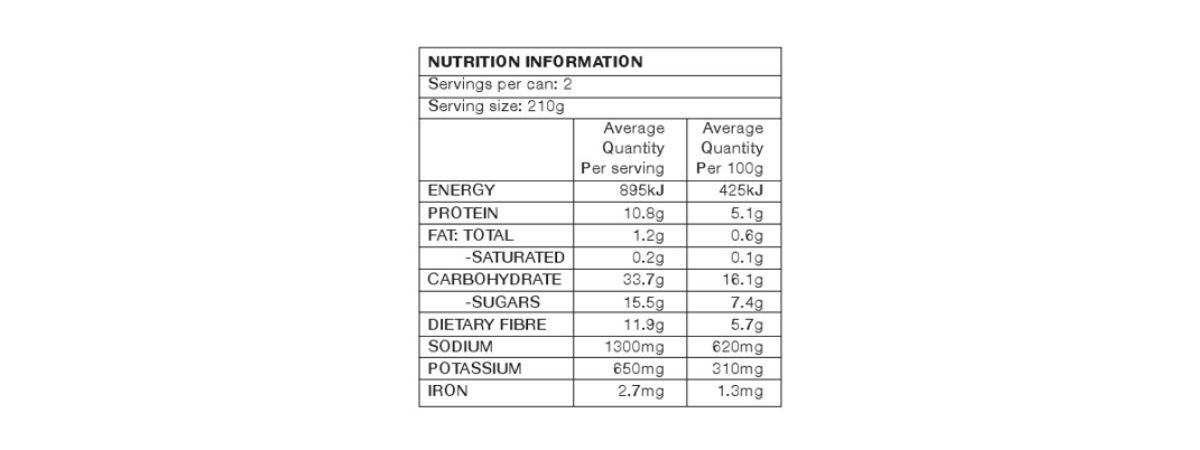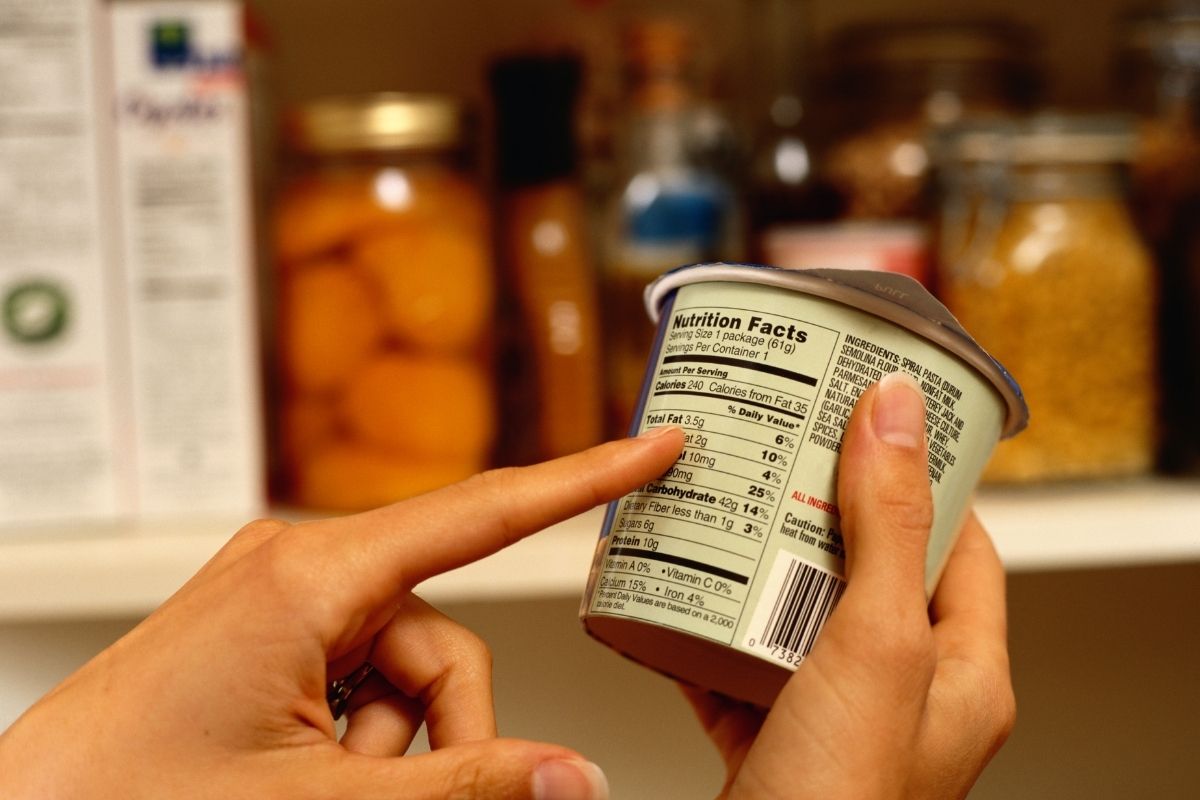nutrition
How to Read Nutrition Labels
The nutrition label in a product provides valuable information on what is inside and how much of your daily recommended intake is included in each serve. But it can be confusing. Understanding the information on a nutrition label can help make decisions on what to eat much easier.
What is a Nutrition Label?
Food products are required by law to present the nutritional values of the food on the packaging in a nutrition information label (NIL). This label has to have information on how much energy, protein, total fat, saturated fat, total carbohydrate, sugar and sodium is in the product. Some foods are not required to have the NIL such as very small packages, foods with no significant nutritional value (such as herbs or spices), foods sold unpackaged (like fruit and vegetables) and foods made and packaged where you buy them (such as pies from a bakery). If a product has made a claim about the nutritional value of the food this must be supported by inclusion of the specific nutrient in the NIL e.g. ‘high in iron’ products should present the iron content.
This is a typical NIL.

Servings
Servings will be different depending on the product and the manufacturer's discretion. It is not always helpful to look at the nutritive value of the serving size suggested if in reality it is not the serving size that you consume. Some manufacturer’s serving suggestions seem to be purposefully misleading in order to read as a healthier option e.g. suggesting a tiny amount for lower Calories per serve. I don’t know anyone who genuinely eats 20g of peanut butter as a serve, it would be much more helpful if the labelling got in line with my big dollop of a tablespoon serve.
If you are comparing products it is always easier to look at the ‘per 100g’ column as this is a set amount that can’t change depending on the manufacturer. Therefore, this is a more accurate comparison.
Energy
Energy is a measure of the Calories in the food. This is usually provided in KiloJoules (KJ), which is often not easily translatable into daily requirements for most people. If you would like to change this number into Calories, aka Kcals, as are typically understood you need to divide the energy in KJ’s by 4.2. If you have not got a calculator handy then just approximately quarter the number and you’ll be in the ballpark. For example, with the NIL above I would round 895 KJs upto 900 KJ and quarter it to 225, the product is around 225 Calories per serve. It is also important to note that the label is not always accurate and there is always an acceptable margin of error.
Other Nutrients Listed
- Protein In grams
- Fat in grams which will also detail saturated fat. NIL’s may detail trans fat, polyunsaturated, monounsaturated, Omega- 3, EPA or DHA fat content also. This usually depends on the type of food product it is and what the manufacturer would like to advertise.
- Carbohydrate in grams, plus sugars in grams. It may also detail the fibre content in grams.
- Sodium will be detailed in milligrams (mg). Sodium is different to the salt content, as salt is made from sodium chloride, which is only part sodium. To get the salt content you will need to multiply the sodium content by 2.5. For example, in the above NIL 1300mg sodium x 2.5 = 3250mg OR 3.25g of salt per serve!

5 / 20 Rule
It can be difficult to establish if a product is high or low in any specific nutrient, e.g. sugar or fat, from the label. The easiest rule to go by is the 5 / 20 rule. If the nutrient is below 5% of the total food it is considered low.
For example, if you look at the ‘per 100g’ nutrient column and check the fat content, if it is below 5g that means it is below 5% fat and would be considered a low fat product. If the nutrient is above 20% of the total food it is considered high. If you look at the ‘per 100g’ column for sugar content and it is above 20g that means it is above 20% sugar and would be considered a high sugar product. This does not necessarily make it a good or bad product, you would ideally check the overall nutrient profile of the food and compare it to your own requirements to make an informed decision.
Ingredients list
The ingredients list must be written in order of amounts present in the food product, from highest to lowest. Meaning that the first ingredient listed is the main ingredient and the last ingredient listed is the ingredient present in the least amount. For example, if a product has sugar as one of the first ingredients in the list then it may be high in sugar. You can confirm this by looking at the NIL and considering the 5/ 20 rule.
Most packaged foods have to include the percentage of the key or characterising ingredients or components in the food. This allows you to compare similar products. For example, pork sausages may say ‘Pork (78%)’ in the ingredients list.
Advertising
Packaging is also used for marketing. Nutrient claims, such as ‘high in Vitamin D’, must be backed up by actually listing the nutrient and the amount present in the NIL. Health claims, such as ‘Vitamin D is good for bone health’, can only be made on products that meet certain criteria standards for other health. This means that the products cannot be high in sugar, saturated fat or salt.
Marketing words not associated with nutrients or health claims are not as tightly regulated. For example, any product can call itself ‘natural’ or a ‘wholefood’ so it really is important you look at and understand the labels in more depth. Don’t fall foul of the natural fallacy, whereby you assume a product is more nutritious because of generalised natural sounding claims on the packaging.
Certified foods e.g. certified organic is a term that is tightly regulated.

Health Star Rating
This is a simple to understand rating process whereby at a glance you can check the relative ‘healthiness’ of a food product. The closer to 5 stars the product is the healthier that food is deemed to be. The lower the star rating the unhealthier that food is deemed to be.
The star system is worked out by an algorithm based on deducted points for energy, saturated fat, total sugars and sodium and increased points for protein, fibre and fruit, vegetable, nuts and legumes. This is a very basic measure of only some of the health aspects of foods and ideally you would not use this system in isolation to measure the health of your food.
It is not foolproof as some foods may appear to have a relatively high star rating because of a lack of what is deemed as ‘unhealthy’ nutrients whilst also not containing much in the way of the ‘healthy’ nutrients either. To put it more simply the rating system may rate nutrient void foods high because of their lack of ‘unhealthy’ nutrients.
Let's Sum it Up
Food products are required by law to present the nutrition information of the product on the packaging. This will often be provided in amounts per serve, as suggested by the manufacturer and also in amounts per 100g. If you want to compare products use the 100g column. If energy is in KJ you can divide it by around 4 to get the Calorie amount. If you would like to check what nutrients a product is high or low in, a simple rule is the 5/ 20 rule. If the product contains less than 5% of a nutrient it is considered low. If a product contains more than 20% of a nutrient it is considered high. The ingredients list is written in order of the amounts of ingredients highest to lowest.
Advertising is not always well regulated and whilst the health star rating may be a good indication of the health value of a food it is not always accurate either. Therefore reading and understanding the nutritional information of your product is important to choose a healthy option that fits with your nutritional requirements.